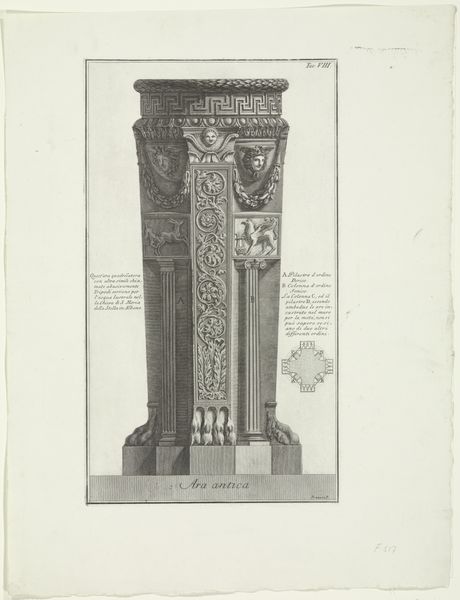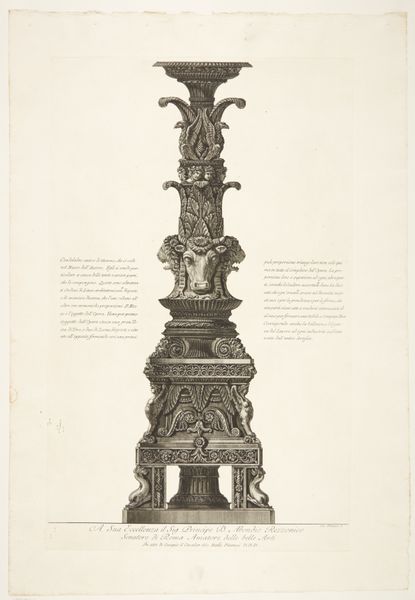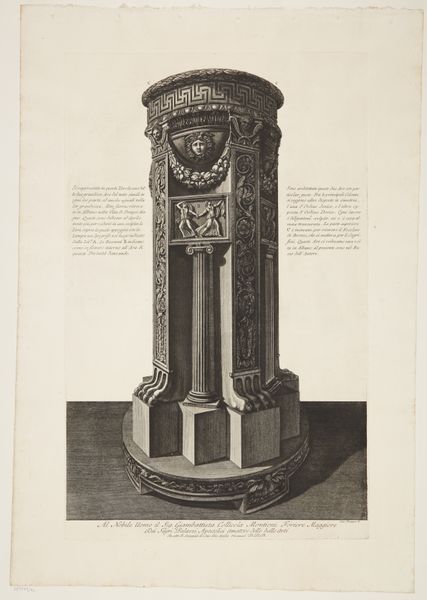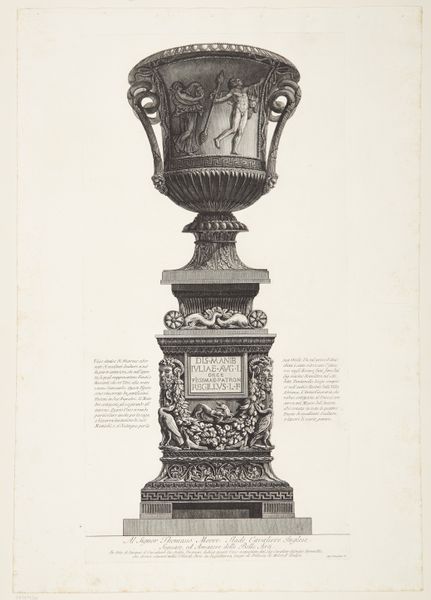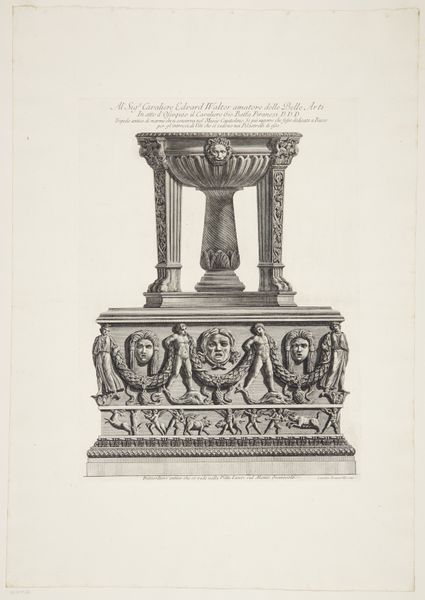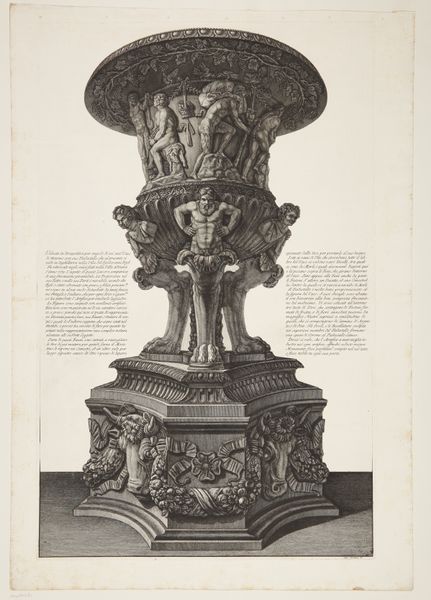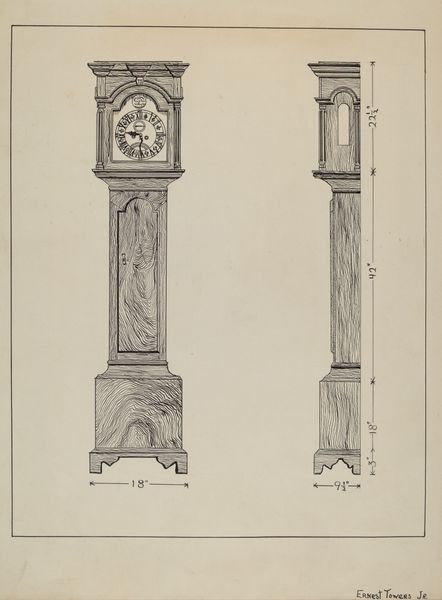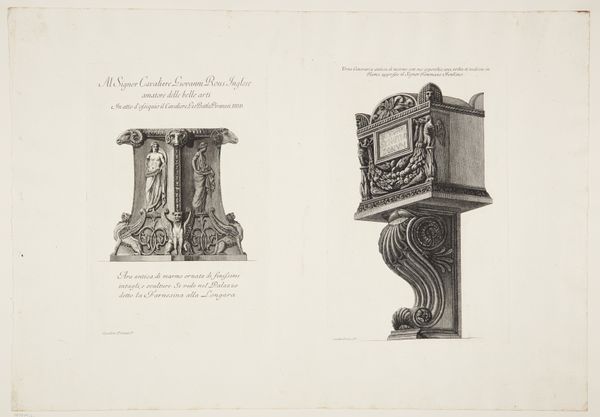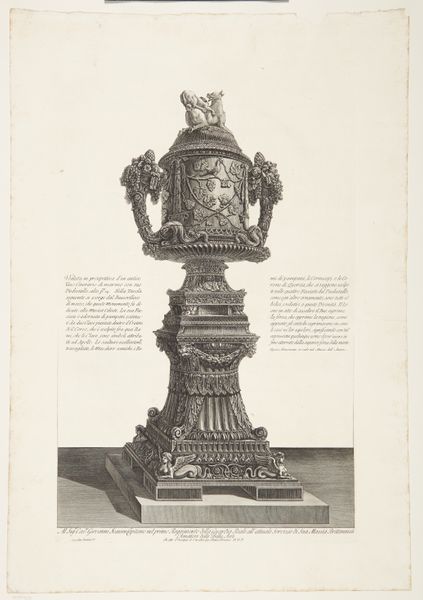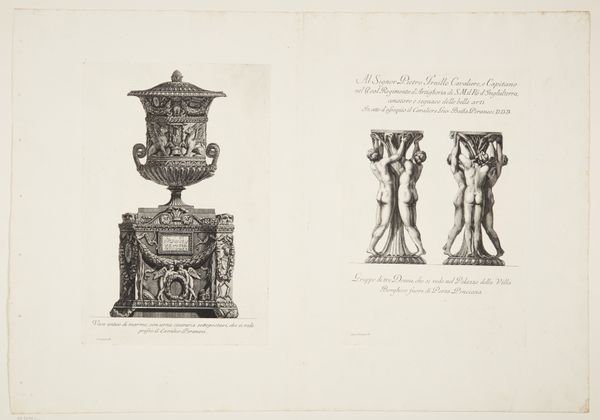
Another view of the same tripod depicted in the preceding etching 1775 - 1778
0:00
0:00
print, etching, engraving
#
neoclacissism
# print
#
etching
#
classical-realism
#
geometric
#
engraving
Dimensions: 675 mm (height) x 420 mm (width) (plademaal)
Editor: So, we're looking at "Another view of the same tripod depicted in the preceding etching," a print by Giovanni Battista Piranesi, made between 1775 and 1778, utilizing etching and engraving. The detail is incredible. It's quite a monumental object. What strikes you most about it? Curator: I'm drawn to how Piranesi uses this almost archaeological depiction of a classical tripod to participate in and shape the neoclassical revival. We have to consider the political and social context. The late 18th century witnessed a renewed interest in classical antiquity, which aristocratic Grand Tourists fuelled when returning home with sculptures and antique fragments, and these informed taste, political ideology, and the design of public spaces. How does Piranesi's detailed representation serve this cultural project? Editor: So it’s less about the tripod itself, and more about how it reinforces and maybe even idealizes classical culture at the time? Do you think that idealization has a purpose? Curator: Absolutely. Piranesi's etchings weren't just documentation; they actively shaped the understanding and appreciation of classical forms, imbuing them with grandeur. Think about who commissioned and consumed these images. Were they destined for scholarly publications, private collections, or to inspire architects and designers? The placement and context shaped how these images acted as cultural currency. Editor: That’s fascinating. It makes you wonder what he chose to emphasize. I hadn’t considered the role these prints played beyond simply depicting objects. Curator: Precisely! And that's the power of looking at art through a historical lens. What seems like a simple rendering actually reveals a complex web of socio-political motivations. Editor: Thanks for pointing that out; I will never see this style of art the same way again.
Comments
No comments
Be the first to comment and join the conversation on the ultimate creative platform.
